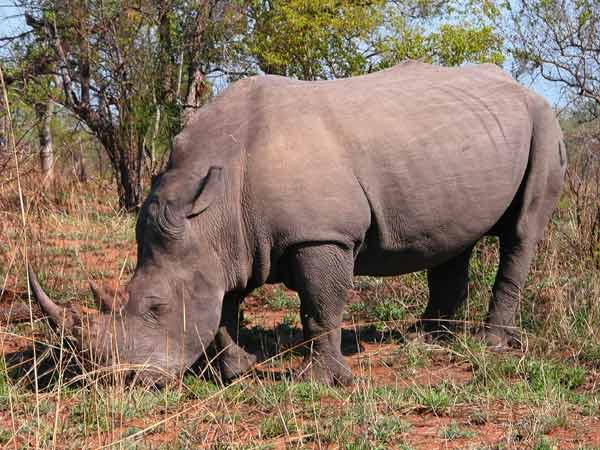Frozen Semen Works in Rhinoceros Artificial Insemination

A female white rhinoceros has successfully given birth to a calf after being artificially inseminated with frozen semen, researchers announced today.
This is the first live birth of a rhinoceros resulting from artificial insemination with frozen and thawed semen, adding the rhino to the list of fewer than 30 animals for which artificial insemination with frozen-thawed semen has resulted in live offspring, the researchers say.
The first live birth of an artificially inseminated rhinoceros occurred in 2007, but that involved fresh semen from a male rhino in the same zoo.
The new feat involved using semen collected from a roughly 36-year-old Southern white rhinoceros (Ceratotherium simum simum), frozen for two to three years and then thawed. Two attempts were made to fertilize the eggs of a 30-year-old female rhinoceros with that thawed semen. The second attempt resulted in the female getting pregnant and giving birth to a healthy calf.
At the time of conception, the female rhino lived at the Budapest Zoo in Hungary, and the male donor resided at Colchester Zoo in the United Kingdom.
The success has implications for conservation of rhinoceroses. While rhinos have existed on Earth for more than 50 million years, comprising an array of species, today only five rhino species survive. And nearly all are on the verge of extinction.
Currently, only 3,100 black, 11,700 white, 2,400 Indian, 300 Sumatran and 60 Javan rhinos live in the wild, with a global captive population of about 1,200 animals, according to the Smithsonian National Zoological Park.
Sign up for the Live Science daily newsletter now
Get the world’s most fascinating discoveries delivered straight to your inbox.
Smithsonian officials and others say that developing viable captive populations of rhinos is critical to the animals' survival.
"The use of frozen-thawed semen holds great potential as a means to overcome the crisis most captive and wild rhinoceros populations are facing in various ways," write Robert Hermes of the Leibniz Institute for Zoo and Wildlife Research in Germany and his colleagues in an upcoming issue of the journal Theriogenology.
- 10 Species You Can Kiss Goodbye
- Images: The World's Biggest Beasts
- Animal Sex: No Stinking Rules
Jeanna Bryner is managing editor of Scientific American. Previously she was editor in chief of Live Science and, prior to that, an editor at Scholastic's Science World magazine. Bryner has an English degree from Salisbury University, a master's degree in biogeochemistry and environmental sciences from the University of Maryland and a graduate science journalism degree from New York University. She has worked as a biologist in Florida, where she monitored wetlands and did field surveys for endangered species, including the gorgeous Florida Scrub Jay. She also received an ocean sciences journalism fellowship from the Woods Hole Oceanographic Institution. She is a firm believer that science is for everyone and that just about everything can be viewed through the lens of science.










